What is draught proofing?
Draught proofing is an effective way to save both money and energy. Draughts waste heat inside your home by letting it out and letting cold air in. Blocking up draughty areas keeps your home warm. As a result, this makes you less likely to turn the heating on, so you use less energy and spend less money on your heating bill.
Although draught proofing keeps your home warm and your heating bill lower, ventilation is of the utmost importance for any property. Vents prevent moisture from building up. Condensation leads to both mould growth and structural damage, so it is vital to protect yourself and your property with both draught proofing products and the correct amount of ventilation. This guide will explain how to ensure your property has good airflow, but also how to draught proof your house and keep it warm in winter and cool in summer.
How do you find draughts?
Firstly, you can see within the property if there are any obvious gaps, such as visible light under and around doors.
During windy days you can listen for rattling and whistling noises. It is possible to feel air moving around doors, windows, floorboards, beams, skirting boards, stairways, and fireplaces.
In areas you think are well ventilated but condensation is still forming this is probably due to a draught in the house you have not yet identified.
If you want to get really technical, you can purchase what is called a smoke pen or pencil. You can purchase these from places such as Toolstation or Amazon for around £25. These are battery operated and once you switch them on a smoke-like substance is released. This is made from a harmless fluid which sometimes smells slightly sweet. On a windy day, you can turn on the pen and walk about your property noticing if the smoke is directed away from draughts.
How do you draught proof a house?
How to draught proof a door
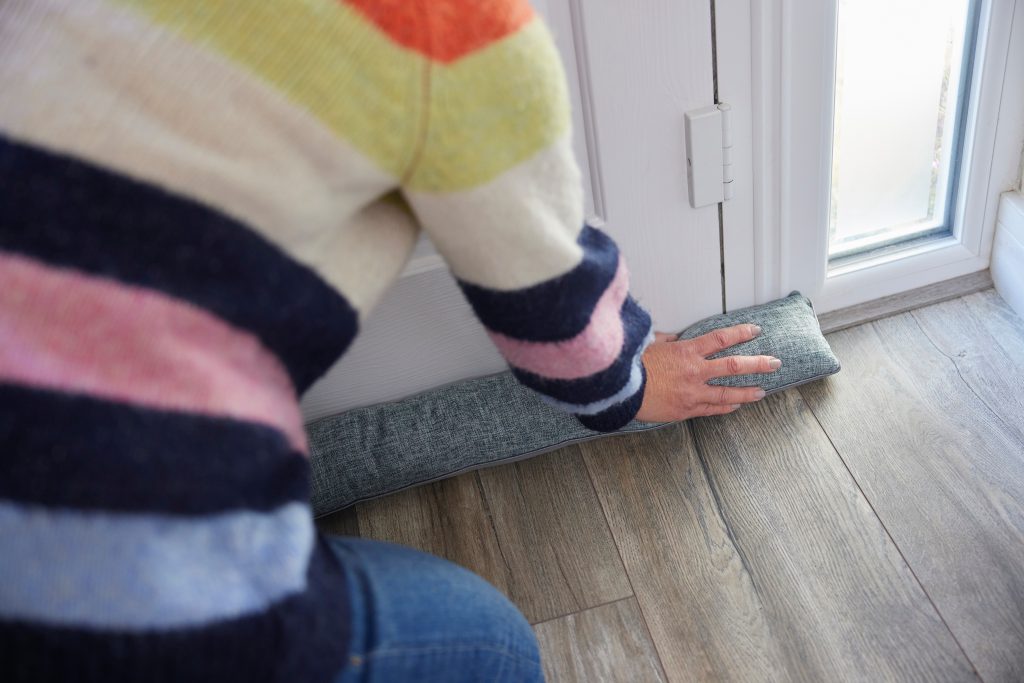
A simple DIY fix for draughty doors is using rubber draught excluder strips. These are normally self-adhesive rolls of rubber or similar flexible material, and you can buy these from local hardware stores. You can measure your doors and cut this roll to size then fix it in place. Door brush strips can also be fitted on internal, external, or sliding doors. These work in a similar way.
You can use a “snake” draught excluder against interior doorways to keep heat in. This has been a popular solution for decades. It is not even necessary to buy one, you can make one of these yourself by recycling a pair of old tights or trousers. You cut your pair of tights or trousers in half to separate the legs from each other. Then you can fill them with old fabric, foam, or old newspaper until it creates a snake shaped draught excluder. Once it is full, you can seal the end by tying it in a knot or sewing it up.
Curtains can be fitted in front of doors too to prevent air coming underneath the door or at the sides of the frame. You can avoid making holes in your walls or door frames by using a tension rod inside the doorway. Heavier material for curtains will prevent draughts more. Be sure not to cover radiators with curtains as this will block heat coming from them and be a potential fire hazard.
How to draught proof bifold doors
Strips around the edges of bifold doors can come loose, and these doors can also sag over time. Make sure your doors are attached tightly first, and then at the bottom you can fit a weather brush which reduces debris and dust from coming indoors and also prevents draughts.
How to draught proof windows
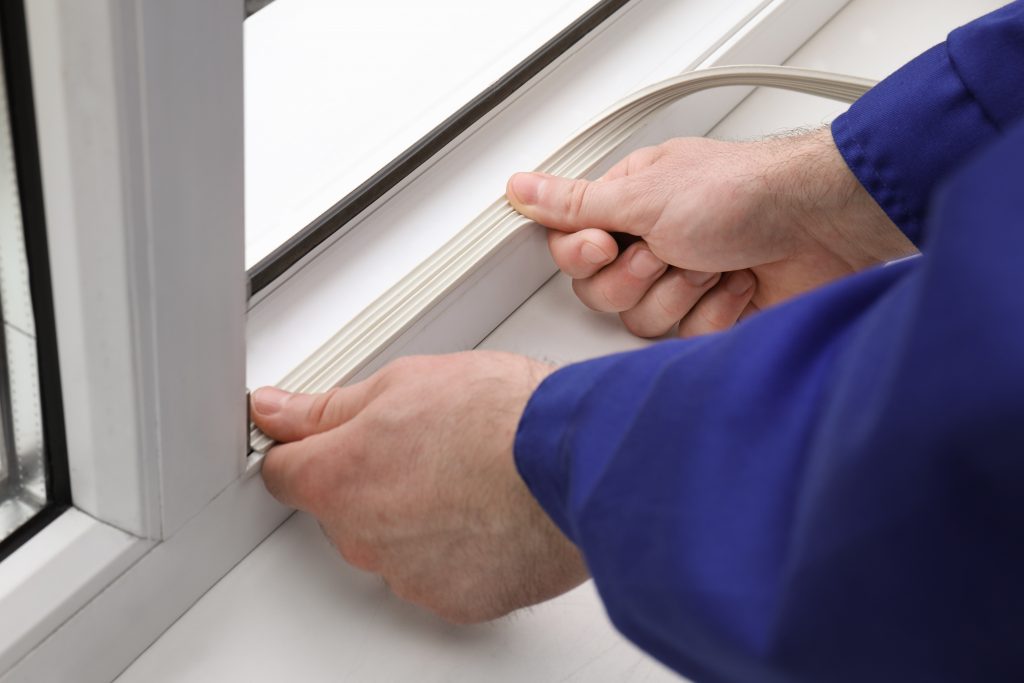
The same draught excluding strips for doors can be applied over gaps in window frames too. Research has shown that air filtration through a sash window can be reduced by as much as 86% by adding draught proofing. Sliding sash windows will need brush strips fitting, and silicone sealant is best for windows that do not open. Older buildings can lose around 15-20% of their heat via draughts, but there are many ways to tackle this without damaging the historic character of your property. These kinds of strips do not alter the appearance of your windows. You can also use the same snake draft excluders for doors but resting on your window sills if this is a draughty area. Thermal curtains can be purchased from home furnishing stores. These are proven to reduce draughts coming into your home. They also have an effect on sound proofing.
Double glazing
If your house does not already have double glazed windows these are a beneficial draft excluder as they are specifically designed for insulating. In winter, double glazed windows capture natural heat within the home and keep it in. As well as this, during summer months the outside of double glazed windows traps heat from outside, keeping your room cooler. Double glazing can also reduce condensation. This is because the glass in these windows is not as cold as single glazing. The air gap between the double glazing helps keep the internal pane of glass closer to room temperature.
How to draught proof a conservatory
The same tips from above can be applied to conservatories as well. In winter, make sure to always keep the door shut between the conservatory and the rest of the house so heat does not escape. Furnishings such as draught excluders for doors, heavy curtains or blinds, and a large rug or carpet will help reduce heat loss. You can install ceiling blinds or aluminium foil and thermal wadding to the ceiling, but be cautious as the latter could cause condensation problems. Insulating the roof of your conservatory is an additional effective way to keep heat from escaping. This has to be done by a professional to prevent condensation issues. If your conservatory roof is glass, this will cover it, but insulating a conservatory roof helps to level out the temperature so you can enjoy the space more in cold winters and very hot summer days. Insulating conservatory ceilings externally requires covering the roof with tiles or slates.
How to draught proof letterboxes and keyholes
Letterboxes can also cause draughts. These can be covered, and this is normally by using a brush-like cover fitted to the inside of the door. These are easily fitted and quickly attached to the internal side of your external door. Key holes can be draught proofed too, with simple covers fitted.
How to draught proof chimneys and fireplaces
A lot of heat can be lost through an uninsulated chimney. Unless your chimney is not used at all, your draught proofing solution must be temporary and easily removed to light your fire when you want to. Chimney balloons and chimney plugs made of wool have protruding handles or charms hanging down to remind you that they are up there.
Unused or infrequently used fireplaces can be covered as well. You can purchase these guards from local hardware stores. Once you have the measurements of your fireplace, make sure you buy a guard that is a few inches wider than the opening. They are easy to remove when you want to light the fire, and when you have unlit it wait until the fireplace is cool before replacing the guard over the hole.
How to draught proof skirting boards
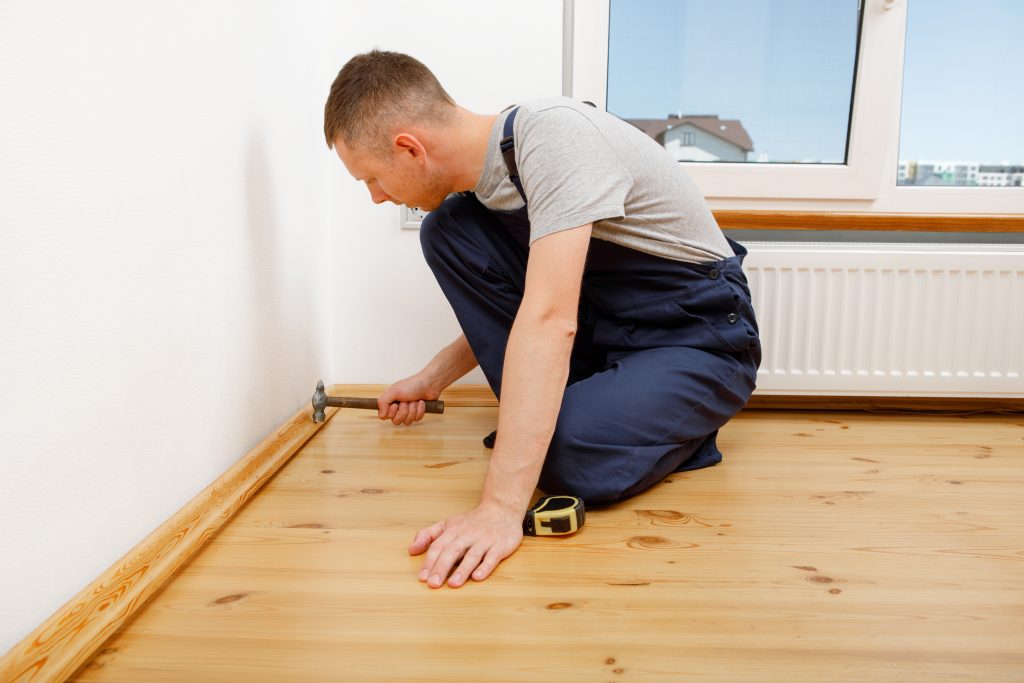
It might not be the most obvious source of a draught, but skirting boards can sometimes let too much air in. You can use sealant such as caulk to fill in gaps. This reduces in size over time and may need to be topped up again. Compression seals, which are rubber strips, can be pushed in underneath skirting boards. Wooden beading can be affixed on top of skirting as well. This is a strip of hardwood wide enough to cover any gaps.
How to draught proof floorboards
Many homes have wooden floorboards. A simple fix for cold air rising up is using a rug or carpet as this will always make your floors feel warmer.
Most floorboards are designed to let in some airflow, so make sure you do not block up the air bricks or vents near your flooring. Before using sealant on gaps, be sure no maintenance is required on or under the floor as it will be much harder to lift the floor once it is draught proofed.
Around 10% of heat loss from the home is through the ground floor, so you could also install floor insulation if you don’t already have it. Scroll down for more information about professional insulation installation.
How to draught proof walls
Some walls in houses can actually feel particularly cold, and you may find too much airflow where pipes have been fitted. This can be found inside kitchen cupboards, around boilers, and around other electrical fittings. Where possible, gaps should be filled using a sealant, but you should ask an electrician or heating engineer first as some gaps are left for health and safety reasons, or they may need to be filled using fire retardant material.
Professional thermal insulation installs

Insulating areas such as your loft, walls, and underfloor can prevent draughts very well and keep your home much warmer. These types of insulation should always be fitted by professionals to ensure they are done correctly and are not blocking ventilation.
- Loft insulation is relatively affordable, lasts for decades, and is a fast install. Loft insulation is made of foam, spray foam, or wool. This will also draught proof your loft hatch.
- Cavity wall insulation involves the filling of cavity walls with material such as mineral wool, beads, or foam. It lasts, at the least, 25 years.
- Wall insulation can also be external or internal. Solid walls contribute to 45% of overall heat loss in the home, so insulating them can be a great way to reduce heat loss. External wall insulation is the fixing of insulation to outside walls, which is then covered and finished. This improves the visual appearance of your property and provides a waterproof barrier against damp. Installation of internal wall insulation involves the attachment of wooden frames to the wall, and the space between this is filled with insulation material to keep your property warm. Both of these installs last at least 25 years.
- Underfloor insulation requires someone to get underneath the floor to carry out the work. Mineral wool or rigid foam insulation is placed between joists. Netting will be installed to secure the insulation in place. If there is a basement or cellar, the ceiling will be boarded once the insulation is fitted. This will completely draught proof your floorboards. Again, this lasts at least 25 years.
Well insulated buildings are energy efficient, leading to a reduced carbon footprint. They are also more comfortable as it keeps the temperature uniform throughout the space.
The Improveasy Group fits all of these measures, so please get in contact with us for more information. Call us on 0800 024 8505.
How much can draught proofing save on energy bills?
Draught proofing just your windows and doors saves around £45 per year.
Does draught proofing reduce ventilation?
Vents prevent condensation and damp as they let in fresh air when needed. Despite it being beneficial to draught proof your house, it is vital not to completely block all air moving through it. Ventilation is necessary to avoid damp or mould and the repair costs these can cause. According to the World Health Organisation, the purpose of ventilation in buildings is to “provide healthy air for breathing by both diluting the pollutants originating in the building and removing the pollutants from it”.
Is condensation harmful for your health?
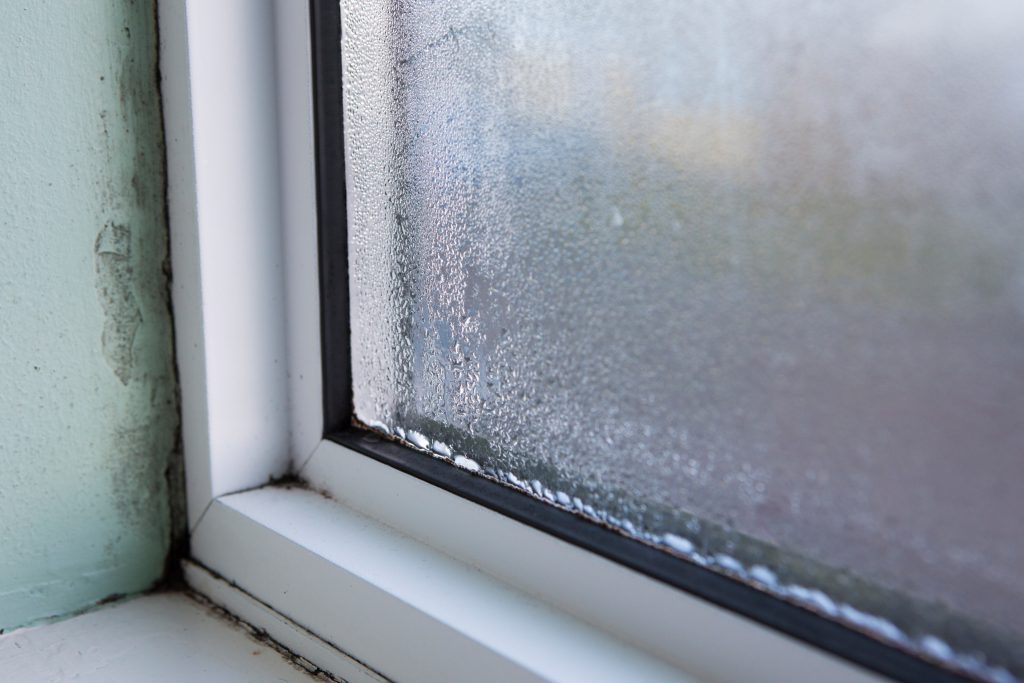
Condensation is caused by water droplets from breathing, bathing, showering, laundry, and cooking which attach themselves to surfaces. This occurs where there is insufficient ventilation to handle the activities in the building. Ventilation ensures your health is not affected by poor air quality because damp and mould within households have been linked with respiratory and cardiovascular illnesses. Condensation causes damp walls and water streaming down windows. When you first notice this happening, check if it is not mitigated by ventilation and opening windows as there could be another draught present in the room. If condensation builds up, mould begins to form, and those who already suffer from health issues may suffer more. It can also be an issue for babies, elderly people, people undergoing chemotherapy, people with respiratory issues, or people with skin issues like eczema.
To prevent issues related to condensation and damp, below is a list of areas it is important not to cover up.
The importance of ventilation
Bathrooms/ kitchens/ utility rooms
Windows in kitchens and bathrooms allow steam to escape and prevent damp and mould. You can, however, draught proof or at least close the doors to each of these rooms, so heat from the rest of the house does not escape when you need to open the windows or vents.
Trickle vents
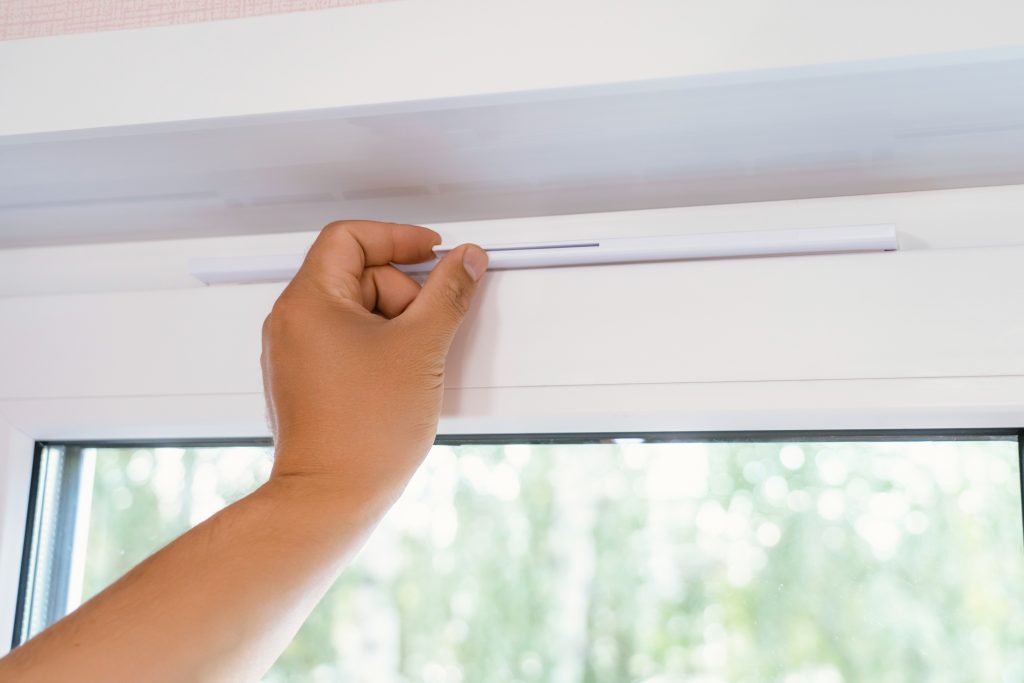
There will usually be trickle vents on your windows which you should not block.
What are trickle vents?
A trickle vent is a small vent at the top of a window component used to allow small amounts of ventilation in rooms when windows and doors are closed. Trickle vents must be fitted in most properties to meet building regulations. The presence of trickle vents can add to your property’s energy efficiency rating. It is important not to block these vents up.
Air bricks
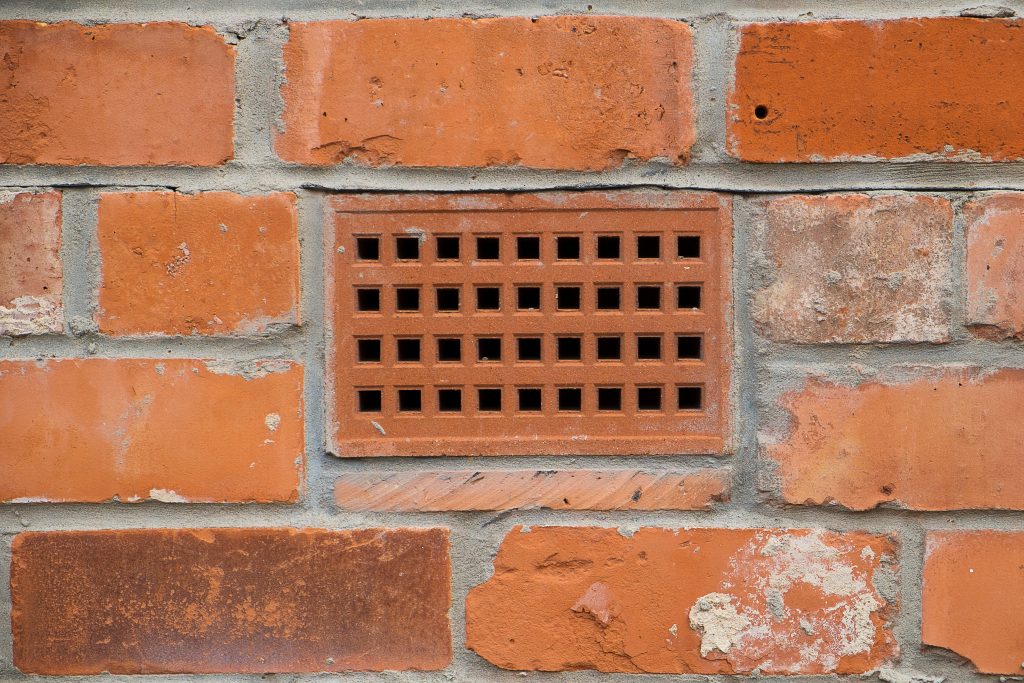
Air bricks are made of either cement, plastic, or metal, and are most often the same size and shape as normal house bricks, but they have holes in them for ventilation purposes.
What does an air brick do?
Air bricks maintain the flow of air beneath a suspended ground level timber floor that has a void underneath it. Air is pulled in through one side of the home and exits on the opposite side. You should avoid covering over the air bricks as you will lose the benefits of ventilation. It is possible to purchase air brick covers which do not block them completely. Air bricks can become blocked up by dirt and leaves outside the house. If the air bricks are even slightly blocked, the ventilation does not function. This does not allow moisture and gases from the ground to escape, which will lead to:
Your home smelling of damp
An insect infestation as they prefer moist areas
Water damage and rot to your plasterboard, plaster, carpets, and walls
Does ventilation require energy?
Other than trickle vents and air bricks, ventilation systems and fans are powered by electricity. Modern systems use highly efficient motors that use very little power to operate. They do cost a small amount to run but this is around a few pence a day.
Other top tips for draught proofing and insulating
- There is no point in heating spaces in the property where you spend no time; do not waste heat in unoccupied rooms or corridors
- Do not fit any new draught proofing in a room that has a condensation problem
- Have your loft, underfloor, and walls insulated by professionals such as us to ensure your home is as warm as possible
- You can also caulk the outside of your windows to prevent cold air creeping in through any gaps
- Insulating your hot water tank prevents it from losing heat. You can purchase a hot water cylinder jacket with a flame retardant cover and fibre infill to keep the tank hot
Other top tips for moisture prevention
- Keep firewood outside your home. You should also stack it off the ground, on pallets for example, to allow for drainage. You should only bring logs in right before burning them
- Dry wet laundry outdoors if this is possible or in an area with good airflow
- Close kitchen and bathroom doors when cooking or washing, and turn the vents or fans on within these rooms when they are in use
- Put lids on pans when cooking
- Put cold water in your bath first when running a bath before adding hot water
- Avoid overfilling wardrobes and leave a gap between furniture, such as sofas, and walls so air can flow
- By preventing rapid changes in the temperature of your property you will help reduce condensation
- Let vents or fans run for 15/ 20 minutes after cooking, showering, and bathing. Having them on during the time you are in the room is not enough
- If your kitchen is very prone to condensation you can even turn on your extractor fan when you boil the kettle
- Make sure to dry condensation buildup on windows and glass doors with a towel to ensure your carpets and surfaces do not get water damaged
- Purchasing a dehumidifier will help to cut down on excess vapour in the home
- Clutter can get in the way of airflow so consider having a clearout and tidying up messy areas
- You can purchase anti-condensation paint for the inside of your home. If your interior walls are affected by mould, you can use mould killer to remove it completely before painting over them. This can be bought from Amazon or hardware stores. Do not remove mould by cleaning it off
Our insulation installs and finance options
Depending on your home’s energy efficiency rating and whether you are in receipt of benefits, we can help you access funding to insulation. Read about schemes for heating and insulation measures here. We can help you access local authority specific funding or the nationwide ECO scheme. Our company is also a finance broker for home improvement companies. So, if you need double glazing we can help you access this. Please click here to view our affiliate partners for alternative home upgrades. Get in touch with us today on 0800 024 8505.
